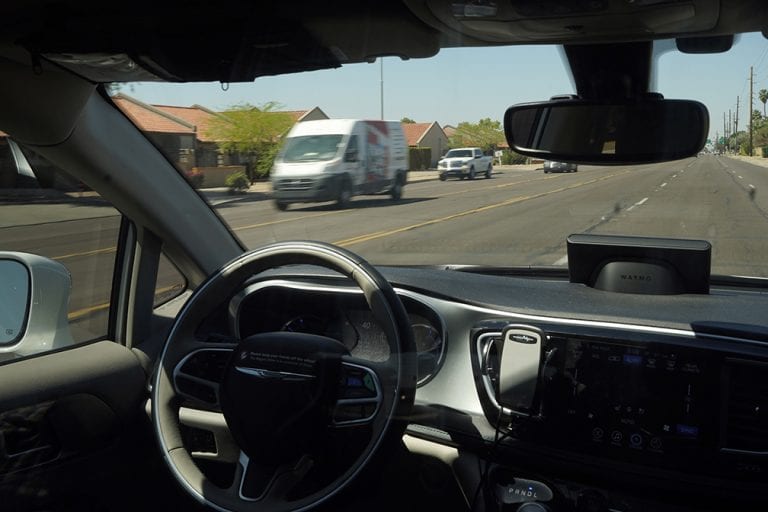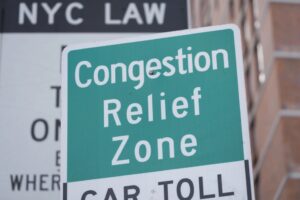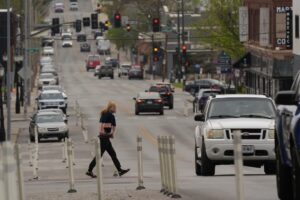DETROIT — The National Highway Traffic Safety Administration (NHTSA) has ordered automakers to report any crashes involving fully autonomous vehicles or partially automated driver-assist systems.
The move Tuesday, June 29, by the U.S. government’s highway safety agency indicates the agency is taking a tougher stance on automated vehicle safety than in the past. It’s been reluctant to issue any regulations of the new technology for fear of hampering adoption of the potentially life-saving technology.
The order requires vehicle and equipment manufacturers and operators to report crashes on public roads involving fully autonomous vehicles, or those in which driver-assist systems were operating immediately before or during a crash.
“By mandating crash reporting, the agency will have access to critical data that will help quickly identify safety issues that could emerge in these automated systems,” NHTSA Acting Administrator Steven Cliff said in a statement.
The agency says it will look for potential safety defects, and the information could cause it to send out a crash investigation team or open a defect investigation.
The order comes after NHTSA has dispatched crash investigation teams to 31 crashes involving partially automated driver-assist systems since June of 2016. Such systems can keep a vehicle centered in its lane and a safe distance from vehicles in front of it. Of those crashes, 25 involved Tesla’s Autopilot system in which 10 deaths were reported, according to data released by the agency.
Tesla and other manufacturers warn that drivers using the systems must be ready to intervene at all times. Tesla cars using the system have crashed into semis crossing in front of them, stopped emergency vehicles and a roadway barrier.
The agency is also investigating non-fatal crashes involving partially automated systems in a Lexus RX450H, a Volvo XC-90 and two Cadillac CT6s. In addition, teams investigated crashes involving an automated Navya Arma low-speed shuttle, and another Volvo XC90 operated by Uber in which a pedestrian was killed in Arizona.
The National Transportation Safety Board, which has also investigated some of the Tesla crashes, has recommended that NHTSA and Tesla limit Autopilot’s use to areas where it can safely operate. The NTSB also recommended that NHTSA require Tesla to have a better system to make sure drivers are paying attention. NHTSA has not taken action on any of the recommendations.
Jason Levine, executive director of the nonprofit Center for Auto Safety, an advocacy group, said the crash reporting is a welcome first step by NHTSA. The center has been asking the agency to oversee automated vehicles for several years.
“Collecting crash data, and hopefully data from crashes which were avoided, can help serve a variety of purposes from enforcing current laws, to ensuring the safety of consumers, as well as paving the way for reasonable regulations to encourage the deployment of safe advanced vehicle technology,” Levine said in an email.
Companies have to report crashes involving fully autonomous or partially automated vehicles within one day of learning about them if those crashes involve a hospital-treated injury, a death, air-bag deployment, pedestrians or bicyclists, or were serious enough for a vehicle to be towed away.
Other crashes involving vehicles equipped with the systems that result in injury or property damage must be reported once a month.
NHTSA said in a statement that the data can show if there are common patterns in crashes involving the systems.
In the order, NHTSA said it is critical for the agency to “exercise its robust oversight” over potential safety defects in automated vehicles. “Misuse of an ADAS (advanced driver-assist system) may create a foreseeable risk and potential safety defect.”
That’s a departure from the past, when NHTSA relied on voluntary guidelines and took little action to regulate the vehicles.
The order says the Justice Department may pursue civil action against companies if they don’t file the reports. They also can face fines from NHTSA of up $22,992 per violation per day, to a maximum of nearly $115 million.
The order was sent to 108 automakers, autonomous vehicle companies and companies that make automated vehicle components.
By Tom Krisher, The Associated Press
The Associated Press is an independent global news organization dedicated to factual reporting. Founded in 1846, AP today remains the most trusted source of fast, accurate, unbiased news in all formats and the essential provider of the technology and services vital to the news business. The Trucker Media Group is subscriber of The Associated Press has been granted the license to use this content on TheTrucker.com and The Trucker newspaper in accordance with its Content License Agreement with The Associated Press.







